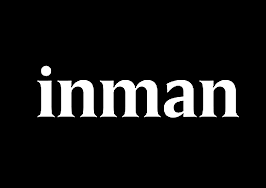This Spring, Inman is obsessing over helping you to tune-up your listings business, with actionable insights, the best advice from top agents and hundreds of helpful stories from all over the world. Interested in sharing your advice and insights with us? Reach out to me at matthew@sandbox.inman.com.
Don’t forget that we’ll also be focusing on how agents and brokerages can all move Faster, Better, Together this July at Inman Connect San Francisco. Not got your ticket yet? Buy it here, and remember that Select members get a $100 discount. Thinking of bringing your team? There are special onsite perks and discounts when you buy those tickets together too. Just contact us to find out more.
Ordinarily, I write from the real estate marketer perspective. However, for this article, I am combining my marketing expertise with my frustrations as a prospective homebuyer in an effort to provide creative solutions for real estate agents making critical open house sign mistakes.
There are a few factors that contribute to signs delivering poor results and frustrating traffic, versus encouraging passersby to actually check out a listing. Below are five open house sign problems I’ve seen as a house hunter.
The lonely sign
Every so often, I’ll come across a single open house sign with an arrow pointing to a neighborhood, but with no address, no time, and worst of all, no follow-up sign.
Great, I know there is an open house somewhere in a neighborhood of 300 houses with several sub-neighborhoods. I usually give it a go, but if I can’t find another sign to guide me, I am not going to go on a scavenger hunt.
Solution: Properly place signs, and ensure you have enough of them. Use signage to guide prospective buyers to your open house. Depending on where the home you have listed is, you’ll want to plan accordingly.
A good rule of thumb is to place signs anywhere that there might be a decision for the driver to make. If the last directional sign says go straight, but you get to a fork, you’ll want to remind the driver to go straight or to make a turn if it merits it.
Put yourself in the buyer’s shoes. Strategically placing sings will guide prospective drivers right to your door. Never assume that buyers have planned to attend your open house and have the address.
The unidentified home
After driving through the neighborhood, I finally think I’ve found the home, but then I realize there are three homes for sale on the same street. So, which one has the open house?
If there is no open house sign in front of the house, I’m not about to knock on a random house and hope for the best.
As an agent, you are likely wondering who would make that mistake, but believe me, it has happened to my family. In these situations, we’ve waited to see if there is some activity, but eventually we have to give up.
Solution: There are many ways to identify a home as one that is open to the public, such as balloons on the for sale sign, a rider, a feather flag and even a wacky arm inflatable guy.
It’s great that buyers were able to follow your directional signs, but they also need to know which home is open. Bonus points if you identify the time the house is open. This way, if you forget to take the sign down, your sellers won’t be bothered if people show up after the event.
The one too many signs
Worse still than one lonely sign is several open house signs from various agents with the same open house plan. When all the signs look the same and don’t identify an address, it’s likely that buyers are going to end up at the wrong open house.
Imagine that your potential buyer ends up buying your competitor’s home due to a simple misunderstanding!
Solution: Make your signs easily identifiable. Enter: branding. If your signs are properly branded, a buyer won’t get confused and follow another agent’s open house signs (or worse, buy his or her listing instead of yours).
Signs should have a consistent brand and identify the agent clearly, so there is no mistake as to where the open house is and who is hosting it.
The sign with no information
If the sign has nothing more than an arrow on it, lacking both an address and a barely visible agent name, it makes it extremely difficult for buyers to find the home.
Even if a follow-up sign makes this information clear, it’s better to showcase key information on all signage, or at least those with a prime location. A sign centrally placed with no information or directional signs to follow will leave prospective visitors confused, guessing and unable to reach their destination.
Solution: If you’re set on using only one sign without any directional signs to follow, ensure that both the open house home address and the agent information are easily visible.
For example, on an A-frame sign, you should leave enough space to attach a paper that contains the address of the particular house, as well as the time when the home will be open. Another option is to create a sign with white board space to include this consistently changing information.
The impossible-to-read sign
Nobody should have to stop the car and get out to read an open house sign. This unnecessary inconvenience is sure to cost you prospective buyers. Small fonts and overly cluttered designs are a ticket to lost opportunities.
Solution: Include only vital information when creating an open house sign. Always go with the largest sign available, and rely on riders for added space. A sign should be kept as clutter free as possible. Of course, you’ll have to abide by requirements in your state.
A well-designed and well-placed sign won’t only guarantee more foot traffic to your open house, but it also sends a clear message to prospective sellers that you’ve got your marketing together. Agents who invest in their sign strategy benefit from more potential buyers and exposure to the entire community.
Laura Ure is the CEO of Keenability, a full-service marketing agency specializing in lifestyle and creative real estate marketing. Follow her on Facebook or Twitter.








